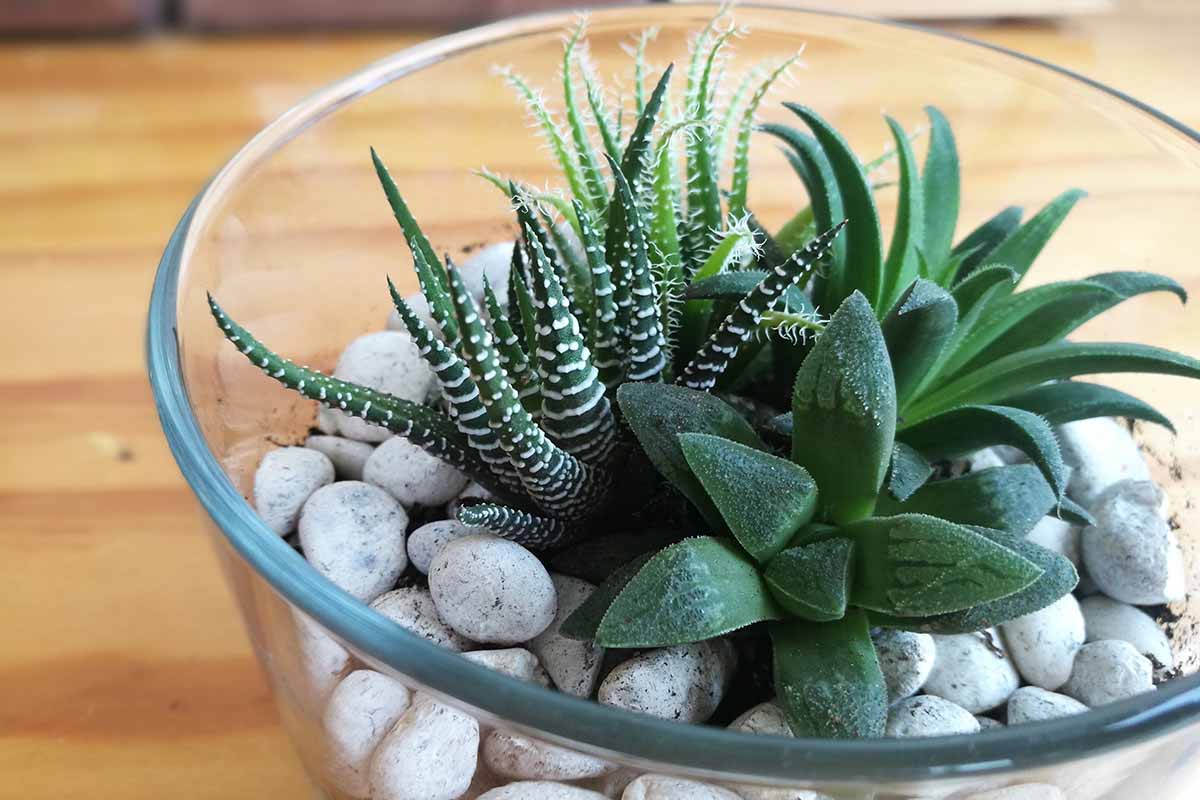
Haworthia is a genus of succulent plants that belong to the Asphodelaceae family. These plants are native to southern Africa and are known for their small, rosette-shaped leaves and attractive appearance. There are over 70 species of Haworthia, with a wide variety of shapes, sizes, and colors.
Haworthia are often grown as houseplants or in small pots as part of a succulent collection. They are relatively easy to care for and can tolerate a range of growing conditions. Some popular species of Haworthia include Haworthia fasciata, Haworthia cooperi, and Haworthia attenuata.
The leaves of Haworthia plants are fleshy and typically have raised ridges or bumps on their surface. The leaves may be green or brown and can have contrasting white or translucent stripes or markings. The plants produce small, tubular flowers that are typically white or pink in color and bloom in the spring or summer.
Haworthia plants are adapted to arid environments and prefer well-draining soil and infrequent watering. They are tolerant of bright or indirect sunlight and can be grown indoors or outdoors in warm, dry climates. These plants are relatively slow-growing and can be propagated from offsets or by leaf cuttings.
How to Grow Haworthia Plants in a Greenhouse
Haworthia succulent plants are great additions to a greenhouse as they are relatively easy to grow and care for. Here are some steps to follow for growing Haworthia succulent plants in a greenhouse:
Location
Select a location in the greenhouse that gets plenty of sunlight but avoid placing them in direct sunlight. Haworthia plants prefer partial shade, so an area that receives filtered or diffused light is ideal.
Soil
Haworthia plants prefer well-draining soil that is rich in nutrients. You can use a potting mix that is specifically designed for cacti and succulents or create your own by mixing sand, perlite, and potting soil in a 1:1:2 ratio.
Planting
Choose a pot or container that is slightly larger than the plant’s root ball. Plant the Haworthia plant in the center of the pot and cover the roots with soil. Make sure not to cover the plant’s leaves or stem.
Be Stingy on the Water
Haworthia are drought-tolerant and require infrequent watering. Allow the soil to dry out completely between waterings. Overwatering can cause the plant’s roots to rot, so be careful not to water too frequently.
And Be Stingy with the Fertilizer
Haworthia plants do not require frequent fertilization. You can feed them with a diluted fertilizer once every three to four months during the growing season.
Temperature and Humidity
Haworthia plants prefer warm temperatures between 70-80°F during the day and cooler temperatures between 50-60°F at night. They also prefer low humidity levels, so ensure that the greenhouse is well-ventilated.
Repotting
Haworthia plants do not require frequent repotting. You can repot them once every two to three years when the plant has outgrown its container.
10 Fun Facts About Haworthia Plants
Haworthia plants are named after Adrian Hardy Haworth, an English botanist who lived in the 18th century.
There are over 70 species of Haworthia, all of which are native to southern Africa.
Haworthia plants are often referred to as “zebra cacti” because of their striped or spotted leaves.
Haworthia plants are often used in traditional medicine in Africa to treat various ailments, including burns, headaches, and stomachaches.
Some species of Haworthia, such as Haworthia truncata, are highly sought after by succulent collectors and can fetch high prices.
Haworthia plants are relatively slow-growing and can take several years to reach maturity.
Some species of Haworthia, such as Haworthia cooperi, produce small, white or pink flowers in the spring or summer.
Haworthia are relatively easy to care for and can tolerate a range of growing conditions, making them great plants for beginners.
Haworthia are often grown in small pots or as part of a succulent collection, but they can also be grown outdoors in warm, dry climates.
Haworthia are not toxic to humans or pets and can be grown safely in homes with children and animals.
Related Articles & Free Email Newsletter Sign Up
How to Propagate Super Succulents




Comment here